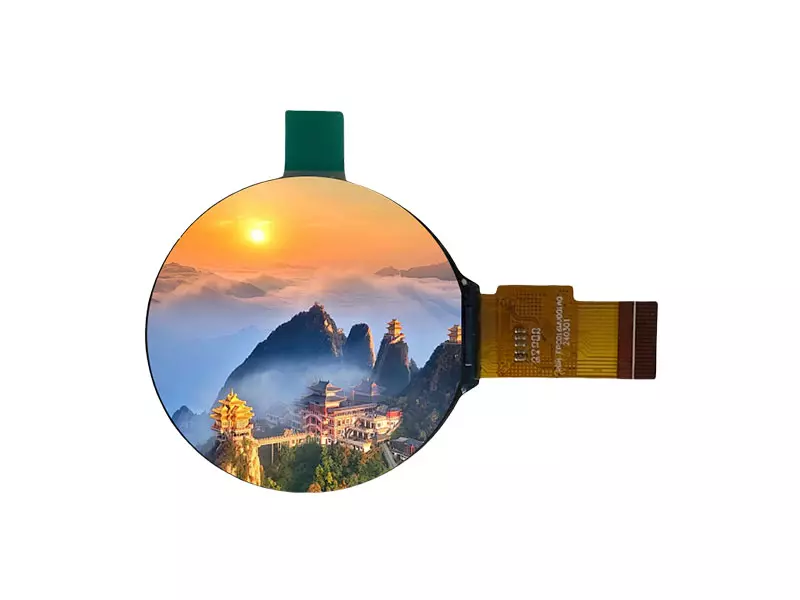Understanding China TFT LCD with CTP: A Comprehensive Guide for Professionals
Jun 05,2025
---
In recent years, capacitive touch panel (CTP) technology combined with thin-film transistor liquid crystal display (TFT LCD) has gained substantial traction in the LED display market, particularly in China. This synergy creates displays that not only offer high-quality visuals but also enable intuitive user interaction. Understanding this technology is essential for professionals in the electr
---
In recent years, capacitive touch panel (CTP) technology combined with thin-film transistor liquid crystal display (TFT LCD) has gained substantial traction in the LED display market, particularly in China. This synergy creates displays that not only offer high-quality visuals but also enable intuitive user interaction. Understanding this technology is essential for professionals in the electrical and electronic fields, particularly those involved with LED displays.
TFT LCD technology utilizes thin-film transistors to control individual pixels, resulting in enhanced image quality, better color reproduction, and faster response times compared to traditional LCDs. The integration of CTP allows for touch-sensitive screens, enabling users to interact directly with the display. This combination is particularly advantageous in applications such as interactive kiosks, digital signage, and various consumer electronics.
One of the standout features of TFT LCDs with CTP is their ability to deliver vibrant images while maintaining efficiency. These displays typically consume less power than other technologies, making them suitable for prolonged use in public spaces or devices where power conservation is a priority. Additionally, modern TFT LCDs are designed to exhibit wide viewing angles and excellent brightness levels, ensuring that content is visible under a variety of lighting conditions.
Another significant advantage is the touch sensitivity of CTP. Capacitive touch panels work by detecting changes in electrical fields when a finger touches the screen. This allows for multi-touch capabilities, meaning users can perform gestures like pinch-to-zoom or swipe, enhancing user experience and interactivity. As consumers increasingly expect these features in their devices, integrating CTP into TFT LCDs is becoming a standard in the industry.
The production of TFT LCDs with CTP in China has also been fueled by advancements in manufacturing processes and economies of scale. Chinese manufacturers are now able to produce these displays at a competitive rate, making them accessible for a wider array of applications. This has led to the proliferation of high-quality displays in various sectors, from retail to education and beyond.
Moreover, the continuous innovation in TFT LCD technology and touch panel design means that these displays are constantly evolving. Features like improved durability, higher resolutions, and enhanced responsiveness are regularly being introduced, ensuring that they remain at the forefront of display technology.
In conclusion, understanding China TFT LCD with CTP is vital for professionals in the LED display industry. The combination of high-resolution visuals and responsive touch capabilities provides a significant advantage in today’s digital landscape. As technology continues to advance, keeping abreast of these developments will be crucial for those looking to stay competitive in this rapidly changing market.
In recent years, capacitive touch panel (CTP) technology combined with thin-film transistor liquid crystal display (TFT LCD) has gained substantial traction in the LED display market, particularly in China. This synergy creates displays that not only offer high-quality visuals but also enable intuitive user interaction. Understanding this technology is essential for professionals in the electrical and electronic fields, particularly those involved with LED displays.
TFT LCD technology utilizes thin-film transistors to control individual pixels, resulting in enhanced image quality, better color reproduction, and faster response times compared to traditional LCDs. The integration of CTP allows for touch-sensitive screens, enabling users to interact directly with the display. This combination is particularly advantageous in applications such as interactive kiosks, digital signage, and various consumer electronics.
One of the standout features of TFT LCDs with CTP is their ability to deliver vibrant images while maintaining efficiency. These displays typically consume less power than other technologies, making them suitable for prolonged use in public spaces or devices where power conservation is a priority. Additionally, modern TFT LCDs are designed to exhibit wide viewing angles and excellent brightness levels, ensuring that content is visible under a variety of lighting conditions.
Another significant advantage is the touch sensitivity of CTP. Capacitive touch panels work by detecting changes in electrical fields when a finger touches the screen. This allows for multi-touch capabilities, meaning users can perform gestures like pinch-to-zoom or swipe, enhancing user experience and interactivity. As consumers increasingly expect these features in their devices, integrating CTP into TFT LCDs is becoming a standard in the industry.
The production of TFT LCDs with CTP in China has also been fueled by advancements in manufacturing processes and economies of scale. Chinese manufacturers are now able to produce these displays at a competitive rate, making them accessible for a wider array of applications. This has led to the proliferation of high-quality displays in various sectors, from retail to education and beyond.
Moreover, the continuous innovation in TFT LCD technology and touch panel design means that these displays are constantly evolving. Features like improved durability, higher resolutions, and enhanced responsiveness are regularly being introduced, ensuring that they remain at the forefront of display technology.
In conclusion, understanding China TFT LCD with CTP is vital for professionals in the LED display industry. The combination of high-resolution visuals and responsive touch capabilities provides a significant advantage in today’s digital landscape. As technology continues to advance, keeping abreast of these developments will be crucial for those looking to stay competitive in this rapidly changing market.
Key words:
Recommended
Top Factors Influencing the Choice of the Best Automotive Grade TFT Display
Top Factors Influencing the Choice of the Best Automotive Grade TFT Display
Table of Contents
Introduction to Automotive Grade TFT Displays
1. Durability: The Backbone of TFT Displays
2. Performance Metrics for Automotive Displays
3. Cutting-Edge Technology in TFT Displays
4. Enhancing User Experience with TFT Displays
5. Size and Design Considerations
6. Cost vs. Qual





